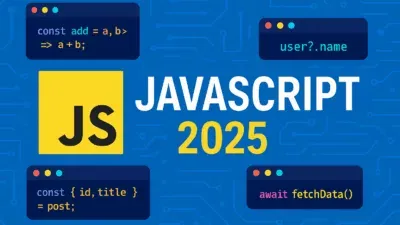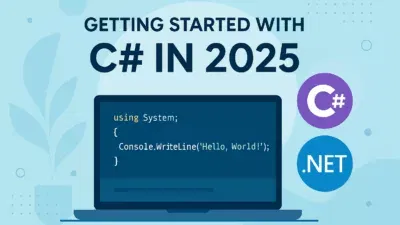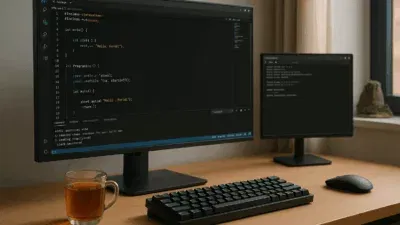Java, a versatile and powerful programming language, has been a cornerstone of software development for over two decades. In 2025, Java continues to evolve, integrating modern features while maintaining its core principles of portability, security, and robust performance (Oracle, 2023). This Java 2025 tutorial serves as a comprehensive guide for newcomers embarking on their Java journey, written from the perspective of a non-native English speaker in Sri Lanka. We will explore Java’s history, setup, fundamental concepts, contemporary features, ecosystem tools, best practices, and community resources, ensuring readers are well-equipped for both academic and industry environments.
Historical Evolution of Java
Java was introduced by Sun Microsystems in 1995, designed by James Gosling and his team as a language for consumer electronics (Gosling et al., 1995). It distinguished itself through the slogan “Write Once, Run Anywhere” (WORA), enabled by the Java Virtual Machine (JVM). In 2006, Sun released Java as free and open-source under the GNU General Public License, which boosted community contributions (Sun Microsystems, 2006).
Since Oracle’s acquisition of Sun in 2010, Java has followed a predictable six-month release cadence, with Long-Term Support (LTS) versions every three years. Notable LTS releases include Java 8 (2014), Java 11 (2018), Java 17 (2021), and the current LTS Java 21 (2023) (Oracle, 2023). Each release has introduced features such as lambda expressions (Java 8), the module system (Java 9), pattern matching (Java 16), and record classes (Java 16), culminating in the advanced capabilities available in Java 21 and beyond.
Setting Up the Java Development Environment
Installing the JDK
To start programming in Java, one must install the Java Development Kit (JDK). As of 2025, Oracle JDK 21 is recommended for long-term stability, while OpenJDK builds (e.g., Temurin by Eclipse Foundation) are suitable for open-source enthusiasts (Eclipse Foundation, 2024). Installation steps vary by operating system:
- Windows: Download the installer from Oracle’s website, run the executable, and set the
JAVA_HOMEenvironment variable to the JDK installation path. - macOS: Use Homebrew:
brew install openjdk@21, then configure~/.zprofilewithexport PATH="/usr/local/opt/openjdk@21/bin:$PATH". - Linux: On Debian-based distributions:
sudo apt-get install openjdk-21-jdk(Debian, 2024).
Choosing an IDE or Editor
Integrated Development Environments (IDEs) greatly enhance productivity. Popular choices include:
- IntelliJ IDEA: Renowned for intelligent code completion, refactoring tools, and integrated testing support (JetBrains, 2024).
- Eclipse IDE: Offers a vast ecosystem of plugins and strong support for enterprise development (Eclipse Foundation, 2024).
- Visual Studio Code: Lightweight editor with Java extensions providing code navigation and debugging (Microsoft, 2024).
Java Language Basics
Structure of a Java Program
A simple Java program consists of a class containing a main method:
public class HelloWorld {
public static void main(String[] args) {
System.out.println("Hello, World!");
}
}
- Class Declaration:
public class HelloWorlddefines a class namedHelloWorld. - Main Method:
public static void main(String[] args)is the entry point for execution (Oracle, 2025).
Primitive Data Types and Variables
Java supports eight primitive types: byte, short, int, long, float, double, char, and boolean (Oracle, 2025). For example:
int age = 25;
double salary = 45000.50;
char grade = 'A';
boolean isActive = true;
Control Flow Statements
Java’s control flow structures include:
- Conditional Statements:
if,else if,else, andswitch. - Loops:
for,while, anddo-while.
Example of a for loop:
for (int i = 0; i < 5; i++) {
System.out.println(i);
}
Object-Oriented Programming (OOP) in Java
Java is inherently object-oriented. Four pillars define its paradigm:
Encapsulation
Encapsulation hides internal object state and requires all interaction through methods (Getter/Setter). For instance:
public class Person {
private String name;
public String getName() {
return name;
}
public void setName(String name) {
this.name = name;
}
}
Inheritance
Inheritance allows a class to inherit properties and methods from another:
public class Employee extends Person {
private int employeeId;
}
Polymorphism
Polymorphism enables objects to be processed in multiple forms. Method overriding and interface implementation are examples:
public interface Shape {
double area();
}
public class Circle implements Shape {
@Override
public double area() {
return Math.PI * radius * radius;
}
}
Abstraction
Abstraction focuses on exposing essential features while hiding implementation details through interfaces or abstract classes.
Modern Java Features in 2025
Java has introduced several modern features to improve code conciseness and performance:
Record Classes
Records, introduced in Java 16, provide a compact syntax for defining immutable data carriers (JEP 395, 2021). Example:
public record Point(int x, int y) {}
Pattern Matching
Pattern matching for instanceof and switch enhances readability (JEP 394, 2021):
if (obj instanceof String s) {
System.out.println(s.toUpperCase());
}
Sealed Classes
Sealed classes restrict which other classes may extend or implement them, improving domain modeling (JEP 409, 2022):
public sealed class Shape permits Circle, Rectangle {}
Project Loom (Preview)
Project Loom introduces lightweight virtual threads for high-concurrency applications, alleviating the complexity of the traditional fork/join framework (Oracle, 2024).
Project Panama and Valhalla (Incubating)
Project Panama simplifies interoperability with native libraries, while Valhalla brings value types and generic specialization for enhanced performance (OpenJDK, 2024).
Java Ecosystem and Build Tools
Build Automation
- Maven: Convention-over-configuration tool that manages dependencies and build lifecycles using
pom.xml(Apache Maven, 2024). - Gradle: Flexible build system with Groovy/Kotlin DSL, supporting incremental builds for performance (Gradle Inc., 2024).
Dependency Management
Central repositories like Maven Central host artifacts, while tools such as Dependabot help keep dependencies up-to-date and secure (GitHub, 2024).
Testing Frameworks
- JUnit 5: Modern testing framework with extensions model (JEP 306, 2018).
- Mockito: Mocking library for unit tests, enabling behavior-driven development (BDD) styles (Mockito, 2024).
Continuous Integration/Continuous Deployment (CI/CD)
Integration with CI/CD platforms (e.g., Jenkins, GitHub Actions) automates building, testing, and deploying Java applications (Ries, 2011).
Best Practices
Code Conventions
Following Oracle’s Java Code Conventions and adopting tools like Checkstyle ensures uniform coding standards (Oracle, 2023).
Effective Use of Generics
Generics provide type safety at compile-time, reducing ClassCastException at runtime:
List names = new ArrayList<>();
Exception Handling
Use checked and unchecked exceptions appropriately, and prefer custom exceptions for domain-specific errors (Bloch, 2008).
Performance Optimization
Leverage profiling tools (VisualVM, Java Mission Control) to identify bottlenecks and apply techniques such as Just-In-Time (JIT) compiler tuning (Oracle, 2022).
Security Considerations
Stay updated with the latest Java security patches and follow secure coding guidelines to prevent vulnerabilities such as SQL injection and cross-site scripting (OWASP, 2024).
Community and Learning Resources
- Official Documentation: Oracle’s Java SE Documentation (Oracle, 2025).
- OpenJDK Mailing Lists: Community discussions on JDK development (OpenJDK, 2024).
- Online Courses: Platforms like Coursera and Udemy offer Java courses tailored for beginners (Coursera, 2024).
- Books: “Effective Java” by Joshua Bloch and “Java Concurrency in Practice” by Brian Goetz remain seminal texts (Bloch, 2018; Goetz, 2006).
Future Trends and Conclusion
As Java approaches its third decade, the language evolves to meet modern demands in cloud-native applications, microservices, and high-performance computing. Features like Project Loom, Panama, and Valhalla promise significant improvements in concurrency, interoperability, and performance (Oracle, 2024). For newcomers in 2025, mastering Java’s fundamentals alongside these contemporary features will pave the way for a successful career in software development.
Reference List
Apache Maven (2024) Apache Maven Project. Available at: https://maven.apache.org/ (Accessed: May 2025).
Bloch, J. (2008) Effective Java. 2nd edn. Addison-Wesley.
Bloch, J. (2018) Effective Java. 3rd edn. Addison-Wesley.
Coursera (2024) Java Programming and Software Engineering Fundamentals. Available at: https://www.coursera.org/ (Accessed: May 2025).
Debian (2024) Debian Packages Search. Available at: https://packages.debian.org/ (Accessed: May 2025).
Eclipse Foundation (2024) Eclipse IDE. Available at: https://www.eclipse.org/ide/ (Accessed: May 2025).
Goetz, B. (2006) Java Concurrency in Practice. Addison-Wesley.
GitHub (2024) Dependabot. Available at: https://github.com/dependabot (Accessed: May 2025).
Gradle Inc. (2024) Gradle Build Tool. Available at: https://gradle.org/ (Accessed: May 2025).
Gosling, J. et al. (1995) The Java Language Specification. Available at: https://docs.oracle.com/javase/specs/ (Accessed: May 2025).
JetBrains (2024) IntelliJ IDEA Features. Available at: https://www.jetbrains.com/idea/features/ (Accessed: May 2025).
JEP 306 (2018) Enhanced @Test Support in JUnit 5, OpenJDK.
JEP 394 (2021) Pattern Matching for instanceof, OpenJDK.
JEP 395 (2021) Records, OpenJDK.
JEP 409 (2022) Sealed Classes, OpenJDK.
Microsoft (2024) Java on Visual Studio Code. Available at: https://code.visualstudio.com/docs/languages/java (Accessed: May 2025).
Mockito (2024) Mockito Documentation. Available at: https://site.mockito.org/ (Accessed: May 2025).
OpenJDK (2024) Project Loom Early-Access Builds. Available at: https://jdk.java.net/loom/ (Accessed: May 2025).
Oracle (2022) Java Mission Control Documentation. Available at: https://www.oracle.com/technetwork/java/javaseproducts/mission-control/ (Accessed: May 2025).
Oracle (2023) Java SE 21 Documentation. Available at: https://docs.oracle.com/en/java/javase/21/ (Accessed: May 2025).
Oracle (2024) Project Loom Overview. Available at: https://www.oracle.com/java/technologies/loom/ (Accessed: May 2025).
Oracle (2025) The Java Tutorials. Available at: https://docs.oracle.com/javase/tutorial/ (Accessed: May 2025).
OWASP (2024) Secure Coding Practices. Available at: https://owasp.org/www-project-secure-coding-practices/ (Accessed: May 2025).
Sun Microsystems (2006) OpenJDK Project. Available at: https://openjdk.java.net/ (Accessed: May 2025).
Ries, E. (2011) The Lean Startup. Crown Business.
Debian (2024).






